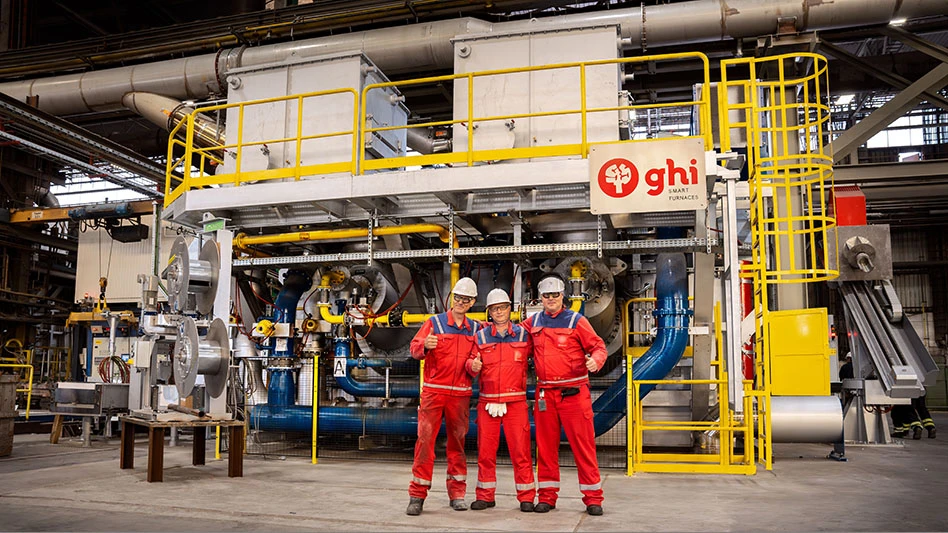Paper stock exports have been on an upswing over the past several quarters. After the doldrums of earlier in the decade, many fiber-poor countries in Asia have been returning to buy growing amounts of recovered fiber. Meanwhile, the U.S. paper market has been holding up. Now, with more Asian countries starting to improve, a number of paper stock dealers have expressed concern over what the implications for the U.S. paper stock market could be when more of these offshore and Latin American markets start to strengthen
While some vendors express concern that shortages could arise, it appears more likely that a better balance between supply and demand will take hold. Prices could continue to improve, leading to a bidding war between domestic and overseas buyers. If this takes hold, prices could move up to a new level.
The improvement in export potential is reflected in the increase in paper stock exports over the same time last year. While still off from earlier in the decade, the trend seems to be increasing. While total exports are increasing, those to Canada have been easing back. The move may show that after several years of being “out” of the market, Asian and Latin American buying is returning, which is playing a pivotal role in the improving paper stock market.
Are the Asian Tigers Back?
Back in the early 1990s the Pacific Rim was an area that was expected to pull around 20% of the recovered fiber from the U.S. South Korea, Taiwan, Japan and China, as well as smaller buyers in India, Indonesia, Hong Kong and the Philippines were purchasing steady amounts of fiber from both the East and West Coast.
However, during the middle of the decade economic problems swept across many of these countries. The result has been draconian for many paper stock dealers. Paper and paperboard mills which had routinely placed orders for tens of thousands of tons of fiber a month were closing, while others found themselves sitting with high inventories.
According to the RISI, Far Eastern recovered paper consumption climbed slightly in 1998 as the aggregate recovered paper usage rate slipped slightly. This result is not surprising given the poor conditions that characterized the packaging sector of the paper and board market. Economic problems in the Far East severely weakened containerboard production due to sluggish regional demand and the difficulty in selling Far Eastern containerboard abroad.
The outlook for regional recovered paper demand reveals a turnaround in market conditions as underlying paper and board demand recovers from its current lows. Further improvement in Far Eastern economic conditions in 2000 will lead to another gain in demand for recovered paper.
The recent decline in the use of recovered paper was due to an increase in virgin-fiber based capacity based upon low cost supplies of tropical hardwood. In fact, RISI forecasts virgin fiber furthering its penetration of the Far Eastern printing and writing markets over the forecast.
According to RISI, large financial investments in tropical hardwood-based printing and writing paper capacity in countries such as Indonesia will increase the role of virgin fiber while causing the recovered paper usage rate to decline by 2003.
Consumption of recovered paper in printing and writing grades wills till climb despite furnish share losses to virgin fiber. Support for recovered paper will come from a healthy average annual gain in the production of printing and writing papers.
The combination of healthy economic growth, rising literacy rates and continued media deregulation will lead to an increase in regional newsprint production in 1999-2003.
Complementing the upswing in newsprint production will be a solid gain in the recovered paper usage rate as major growth markets such as China add recycled-newsprint capacity.
Lately, it seems that more of these economies are starting to put together a comeback. A number of paper mills in Asia have come back on line with assistance of North American and European paper company backing. Abitibi-Consolidated, Kimberly-Clark, Procter & Gamble, to name a few, found themselves playing a more involved role with the operation of mills. Lately, the easing of freight rates has allowed for better than expected shipments to the Pacific Rim from the United States.
Meanwhile, China, which had the reputation of moving in and out of the market, has begun playing a more active, steady role in paper stock markets. Over the past several months orders into China have helped boost old news prices. As the country continues to grow, China is expected to become an even larger player in the paper stock market from the U.S.
South Korea also has been making much stronger purchases over the past several months. The replenishing of stocks by this country is welcome news, especially for the deinking grades.
There isn’t any indication that prices will wane anytime soon. With market pulp prices continuing to improve, it is unlikely that any decrease in SWL prices will be seen, especially with steadily rising pulp and pulp substitute prices.
Taiwan has been one of the steadiest buyers of many of the low grades, especially old corrugated. As the economy of Taiwan continues to grow, and it continues to ship a good portion of its finished product to China, demand for U.S. paper stock has remained good.
With escalating prices for recovered fiber both in the U.S. and for overseas movement, the European market could start playing a more active role in the market. By the middle of the 1990s, many Asian countries had begun pulling more material from European sources, resulting in many of these same countries being able to slow down their purchases of recovered fiber from the U.S.
The ability to play the two supply areas off each other kept prices fairly well in check through a good portion of this decade.
Lately, however, market conditions in Europe have prevented as much material flowing from Western European countries to Asia. Also, one of the advantages enjoyed recently was a significant freight rate difference. However, the difference in freight rates between Europe-Asia and U.S.-Asia has dwindled, making shipments from the United States more economically viable.
While expectations are high that next year should continue the steady improvements in the Asian economies, a myriad of obstacles could crop up. I
China, which continues to play a growing role in the paper stock market, could suffer economic setbacks that saddled other Asian countries with depression-like problems. There is also concern about the struggling Japanese economy, which is only slowly coming out of the extended recession that has been plagueing much of Asia over the past several years..
MEXICO: BUSINESS REBOUND
The Mexican economy was damaged by the devaluation of the Mexican peso several years ago. The result was a steep decline in shipments into the country. Since then the Mexican economy has been slowly rebuilding. Recently, orders for recovered fiber into Mexico have been improving. A number of vendors see strong movement of most grades into Mexico.
Several large buyers of the grade have become more prevalent. Kimberly-Clark Corp., one of the biggest buyers of office grades, is pulling a sizable amount of white paper for their tissue operations. While the demand has led to strong prices in the short term, the ability of these suppliers to keep moving material has been enough to strengthen prices across the country.
In the short term, the Mexican tissue market continues to surge, with manufacturing increasing by close to 10% a year, says Carlos Rovelo, Balcones Recycling, Dallas. The major players for the Mexican market are Kimberly-Clark and Procter & Gamble. Market opportunities also may open up the possibilities of other moves by U.S. tissue manufacturers into Mexico.
Upbeat opinions dominate forecasts for the rest of this year. Most vendors feel exports will hold up through the end of the year, with some dealers feeling stronger markets could continue into the year 2000. Whether this continues after that remains to be seen, but in the short term, exporters are enjoying their position.
The author is the editor of Fibre Market News.

Explore the October 1999 Issue
Check out more from this issue and find your next story to read.
Latest from Recycling Today
- ReElement, Posco partner to develop rare earth, magnet supply chain
- Comau to take part in EU’s Reinforce project
- Sustainable packaging: How do we get there?
- ReMA accepts Lifetime Achievement nominations
- ExxonMobil will add to chemical recycling capacity
- ESAB unveils new cutting torch models
- Celsa UK assets sold to Czech investment fund
- EPA releases ‘National Strategy to Prevent Plastic Pollution’





